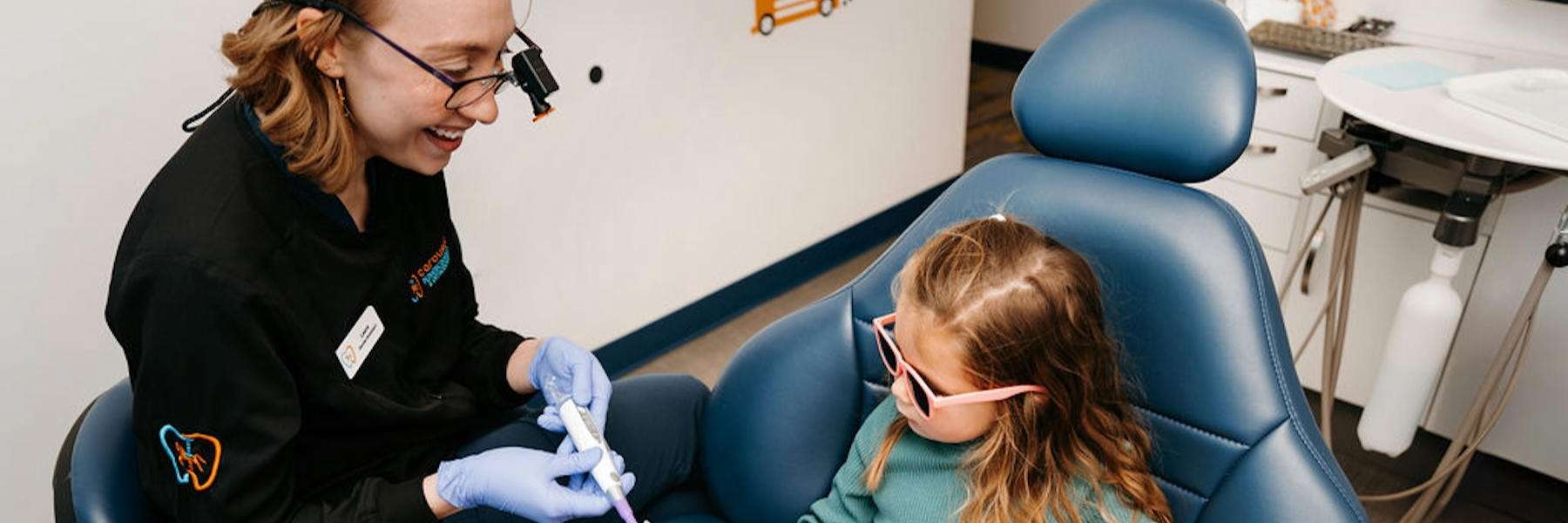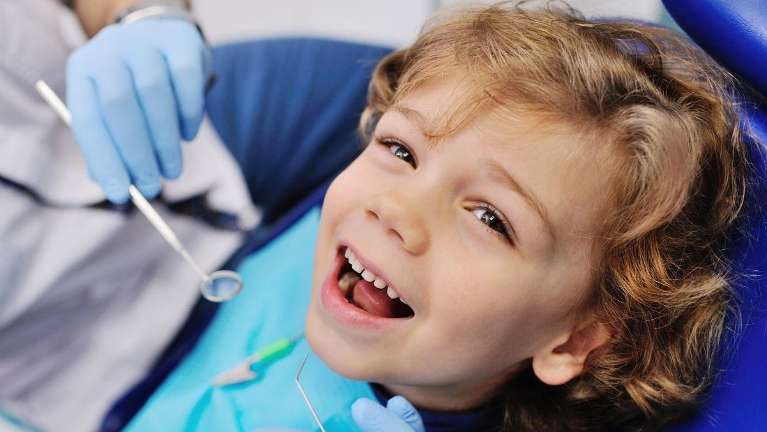Examples of Behavioral Guidance Techniques
Adapting these techniques to your child requires our dentists to be skilled in empathy, communication, tolerance, flexibility, and active listening. There are effective techniques that our pediatric dentists in Apple Valley, MN have been trained to use.
 Non-Threatening Language
Non-Threatening Language
To help kids get used to dentistry on a level they can understand, we use child-friendly terms. For example, instead of a drill, we call it a “water whistle,” cavities are “sugar bugs,” and injections are “sleepy juice.”
Using these non-threatening terms helps your child see that dentistry isn’t scary and can be a fun and exciting adventure for them. We also ask that parents follow our lead and avoid using terms like pain, shot, or hurt.
Although we use kid-friendly terms to make dental visits more fun, we know how important honesty is in building a child’s trust. Whenever a child directly asks if he or she is “getting a shot”, we always tell the truth. We have found that working with a child to address their fears in a compassionate and patient manner is critical in building trust.
The Tell-Show-Do Technique
Tell-show-do is an excellent technique to build trust with an apprehensive child. “Tell” involves our dentist explaining what we’re going to do in non-threatening terms. “Show” is when we demonstrate it by showing the instruments we’ll use, and “do” is performing the procedure.
Other Behavioral Guidance Techniques We Use
 Distraction: Every parent understands the value of distraction as a way to keep their child comfortable, happy, and occupied. At Carousel Pediatric Dentistry & Orthodontics, we have ceiling-mounted TVs over each treatment chair so your child can sit back and watch their favorite show.
Distraction: Every parent understands the value of distraction as a way to keep their child comfortable, happy, and occupied. At Carousel Pediatric Dentistry & Orthodontics, we have ceiling-mounted TVs over each treatment chair so your child can sit back and watch their favorite show.- Sedation: Nitrous oxide sedation is extremely beneficial for children of all ages, including those with special health care needs. We also offer in-office IV sedation and general anesthesia.
- Parental involvement: We understand that you want to be helpful, but we ask that you put your faith in us and let us take the lead during your child's appointment. It’s crucial for us to develop a one-on-one relationship with each child, with you acting as a supportive observer.



 appointments. Our pediatric dentists use several
appointments. Our pediatric dentists use several  techniques to help your child feel comfortable, safe, and at ease when they visit our Apple Valley, MN, dental office.
techniques to help your child feel comfortable, safe, and at ease when they visit our Apple Valley, MN, dental office.  techniques to help them feel at ease.
techniques to help them feel at ease. Non-Threatening Language
Non-Threatening Language Distraction: Every parent understands the value of distraction as a way to keep their child comfortable, happy, and occupied. At Carousel Pediatric Dentistry & Orthodontics, we have ceiling-mounted TVs over each treatment chair so your child can sit back and watch their favorite show.
Distraction: Every parent understands the value of distraction as a way to keep their child comfortable, happy, and occupied. At Carousel Pediatric Dentistry & Orthodontics, we have ceiling-mounted TVs over each treatment chair so your child can sit back and watch their favorite show.

